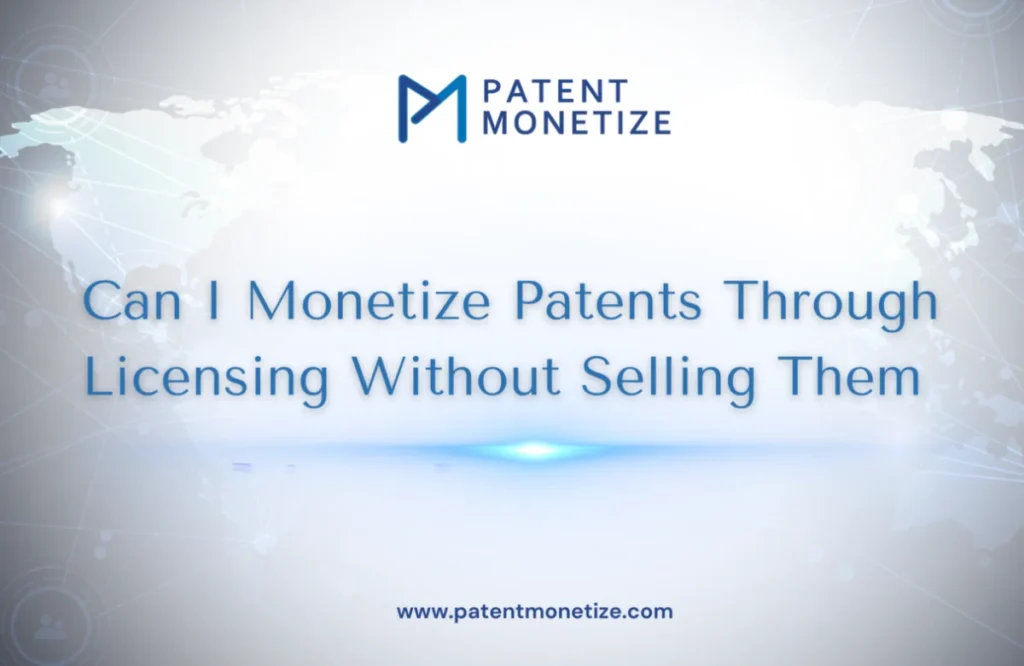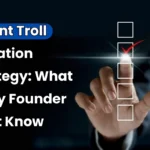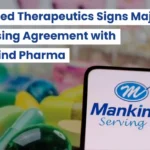
Can I Monetize Patents Through Licensing Without Selling Them? The new world has changed its gold standard in innovators, creators, and entrepreneurs; these are forms of IP, out of which patents end up being the most rewarding. People and companies remain astonished by how they can monetize patents without selling them. Patent licensing is how patent owners realize some form of return on their innovations, even though they never surrender ownership rights over
their patents. This paper discusses the nature of patent licensing, how it works, types of licensing arrangements, and why patent licensing has been such an attractive means of capitalizing on patents besides selling them off.
What is Patent Licensing?
It grants authority to some other person – called a licensee – to make use of, make or sell, as well as to sell or otherwise dispose of, any and all aspects, forms and copies of said inventions protected by a patent. Usually, it does so through royalties, but the patent holder licensor receives cash for licenses: licensing has nothing comparable, as selling it still owns and, in return, gives it worth. Licensing is a flexible agreement which can be structured according to what the parties involved need. You, being the owner of the patent, can outline how to structure the agreement according to the value of your patent and your business goals.
Types of Patent Licensing Agreements
Depending on what you want to achieve, what nature your invention has and the prevailing market condition, there are different kinds of licensing agreements that one can benefit from. Here’s how the most common licensing structures break it down:
1. Exclusivity License
An exclusive license grants the licensee an exclusivity right to exploit patented inventions in a defined territory or market space. Exclusive License Agreement: And there, too, it is contemplated that the licensor covenants that he shall not license the patent to any other party. This is the primary form of licensing where the licensee highly cares for the invented product and is willing to spend within the process of commercialization, therefore he pays the increased amount of the royalty rate or even out-and-out some sum to the licensor for granting him permission for licensing of patents.
Advantages of Exclusive Licences:
- This offers the scope for more royalty or a payback.
- The licensor shall have the absolute power and authority in performing the licensing work.
- The party who is the licensing party is not losing his patent but rather gaining through his invention.
Disadvantages of Exclusive License
- This depends on one licensor
- This loses the possible income that could be generated by other parties
- This might restrict the rights of the licensor further on further licensing others further for further liability as well.
2. Non-Exclusive License
A nonexclusive license actually confers a right to the licensor regarding licensing of the same invention to any other number of licensees. That is until such time as the licensing revenue maximized the said flow goes to the licensor; however, no such exclusive rights in regard to the invention itself are allowed to be passed through a nonexclusive license.
Advantages of Non-Exclusive License:
- There is a chance of earning royalties because the right is shared with several other licensees.
- There will be less dependence on the party.
- Several licensing agreements can be entered.
Disadvantages of a Non-Exclusive License:
- The royalty rates will be low because of the fact that more than one party is going to use the invention.
- Loss of control over efforts that might end up placing the invention on the market simply because of the many licensees.
3. Sublicense
There is a sublicense where the original licensee is licensed to assign sublicenses of the patented invention to a third party. For this reason, it would be convenient if the original licensee intended to extend the industrial-type distribution of the invention but could not or would not do so on its own initiative.
Advantages of a Sublicence
- The licensor can get extra revenue through the assignment of sublicenses.
- Can help provide easier access to the market without surrendering control to a third party.
Cross-Licensing disadvantages
- Tends to create confusion or duplication between the original licensor and sublicenses.
- Untraceable in subsequent sublicense agreements.
4. Cross-Licensing
This party is entitled without any monetary rewards since, in cross-licensing, companies having more than one patent or even two or more companies share each to license the intellectual property of other firms; this party is granted rights without monetary awards. Licensing becomes helpful when the business firms don’t have any fear of breaking patents and agree to share an idea.
Advantages of a Cross License:
- Patents are allowed to access, without much hassle, a wide range portfolio.
- The threat of patent litigation is minimized.
Disadvantages of Cross-License:
- Exclusivity is lost over a form of IP.
- The costly IP has to be shared with its competitors.
How do Patents License Work?
Generally, patent licensing involves a sequence of some of the main steps. Patent holders should study the process of their work so that they do not get surprised negotiating at any stage in the chain of licensing and end up getting a reasonable deal.
1. Value The Patent
Determine your patent value before even finalizing the license agreement. The process of patent valuation is indeed very intricate, but you may have an approximate amount using either one of these following methods-market based, income-based, or cost-based. And for such a kind of procedure you might seek some experts. For example, valuation experts for patents or even for IP attorneys so they will assist you about the amount value which your patent can be valued in.
2. Determine Licensees
The next step would be identifying the right licensees and deciding if they should be licensed by your patent. This would be companies operating in industries relevant to your invention, among other types of businesses, which would most likely use your patented technology. There are many great ways to create such relationships, but some of the most common ones are through networking or industry events and working with licensing agents.
3. Negotiate Terms
The last step in this is the negotiation of terms of a licensing agreement. This will detail what you are being given and for how long and what rights are involved. Negotiate all these factors. That includes
- Royalty Rates: Percentage sales from the licensee of your patent.
- Upfront Payments: A one-time, upfront payment usually paid before the agreement is entered into.
- Territory: The territory or geography areas in which a licensee will be able to operate.
- Exclusivity: Whether the agreement grants rights exclusively or multiple licensees.
- Duration: For how long the license will last.
- Draft your Licensing Agreement: Once the terms are agreed upon, a formal, legally binding licensing agreement needs to be drafted. An attorney should be consulted to ensure that the agreement is in your best interest and in compliance with the applicable laws.
4. Draft your Licensing Agreement
Once the terms are agreed upon, a formal, legally binding licensing agreement needs to be drafted. An attorney should be consulted to ensure that the agreement is in your best interest and in compliance with the applicable laws.
5. Monitoring the Agreement
Monitor after signing the agreement the licensee’s performance. This will prove that they do not abide by some of the details, especially those that refer to the payment of royalty, reporting, and exertion made for commercializing. Not monitoring would attract problems that might bring damage in your revenue and intellectual properties’ protection. There are quite a number of solid reasons why licensing your patent would be more beneficial than selling it. Here are some of the main benefits of licensing your patents as opposed to selling them:
Ownership
You remain to be the owner of your intellectual property if you license. This is because, even if the inventions turn out to become valuable later on or the market conditions change, you still have the opportunity to exploit it.
Ongoing Revenue Stream
There is the continuous flow of income that licensing can generate through royalties for those patents that may be of long-term business viability. Again, you could not sell outright where money goes in one single transaction, forget about the patent, but you get an on-going source of income during the existence of a license.
Lower Risk:
Licensing it instead of selling may distribute the risk of commercializing because generally, you only pay the cost for the production, marketing, and distribution of the patented product by the licensees in the marketplace and do not bear all the costs and risks involved in bringing it into market.
Maximizes Reach
Licensing allows your invention to be adopted by firms that already possess the manufacturing facilities and business outreach to expand distribution and access to your innovation. This is very helpful for a small business or individual that cannot afford to increase volume and distribution on its own.
Read Also: What are the Benefits of Patent Monetization
Conclusion
Licensing patents as an income-earning entity gives a patent owner the opportunity to benefit from his invention without selling the invention. Through licensing, you become an owner producing revenue and countering risk regarding the potential hazard of commercialization. You add value to patents by choosing correctly both the nature of the licensing contract to enter and your assessment of potential licensees and negotiation to get favourable terms. With either type of exclusive license, or even with a sublicensing or cross-licensing agreement, this patent licensing provides you with an easy road to bringing your intellectual property to bear long-term for greater financial payback.




